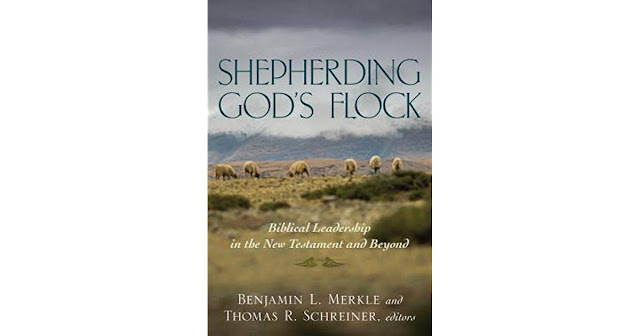A couple of corrections/clarifications to Jason G. Duesing's "A Cousin of Catholicism: The Anglican Understanding of Church Leadership."
I am
reading Jason G. Duesing’s interesting contribution to the book, Shepherding
God's Flock: Biblical Leadership in the New Testament and Beyond (ed.
Benjamin L. Merkle and Thomas Schreiner; Grand Rapids, MI: Kregel, 2014). It is
entitled “A Cousin of Catholicism: The Anglican Understanding of Church
Leadership.” Deusing is exploring the issue of the dependence of Anglican
Ecclesiology on Roman Catholicism. I think I’m going to agree with his overall
thesis, but so far I have run up against a couple of things calling for
clarification. The author seems to overestimate both the power and influence of
the Roman Church in its ability to control things and shape institutions in
early centuries of Christianity. We see this, for example, in his statement:
By the late sixth century,
the churches throughout the Mediterranean region followed the increasing
consensus that the bishop of Rome held greater authority over all other
bishops. The bishop of Rome served in succession to the Apostle Peter due to
the predominant interpretation of Matthew 16, Peter was given apostolic
authority above the other bishops. (p. 226).
Despite
their being part of the “Mediterranean region,” however, this was not, and
never has been, the case in the Eastern Church. The bishops of Rome were viewed
as Peter’s successors, yes, but that was not understood in the East to imply
that “he held greater authority over all the bishops,” especially the other
four great Episcopal Sees of Constantinople, Antioch, Jerusalem, and
Alexandria. They may have granted that bishop of Rome, as Peter’s successor,
enjoyed a certain primacy, but it was, strictly speaking, primus inter
pares that is to say, a primacy that made him “first among equals,” in
other words, a primacy that did not include telling other bishops what to
do.
Another
point where I would make a clarification is where the author seems to imply
that the two-tier New Testament model of Church governance, which consisted of
multiple bishops/elders on the one hand and deacons on the other, persisted
longer than it did. The author says that “well into the third century the terms
for elders and bishops were used interchangeably, even though Ignatius and
Cyprian had developed a three-tier model of bishops, elders, and deacons that
increasingly became standard.” (p. 226, n. 18)
In
the first place the claim that Ignatius and Cyprian “developed” the three-tier
model is misleading, at least insofar as it is taken to mean they came up with
the model. When Ignatius wrote his seven letters in the early years of the
second century while on his way to his martyrdom at Rome, the three-tier model
(one bishop, multiple presbyters, multiple deacons) was indisputably in place
in five of the six churches he addressed. The single church he wrote to where
doubt remains is, ironically, the Church of Rome. Given the evidence of
Ignatius, even many Roman Catholic scholars today grant that Rome followed a multiple
elder-bishop model at that time. It cannot be proved, but if it is so, then
the three-tier model was already in place in the churches of Ephesus,
Magnesia, Tralles, Philadelphia, and Smyrna, the churches in the very regions
where the Apostles John and Paul had labored only a relatively short time
before—in the case of John, only a few years before—prior to its introduction in Rome. (Ignatius was certainly a great advocate of the three-tier model, but he didn’t
invent it). As for Cyprian, he was born about a century after Ignatius died. As Baptists it is crucial when defending our own ecclesiology to
come to grips with how early the three-tier model arose, even among the
first-generation disciples of the apostles.
The
other difficulty arises in connection with the claim that the terms bishop and
elder were used interchangeably well into the third century. If by that the
author meant that both terms could be used interchangeably to refer to one and
the same ecclesiastical office, then that is simply incorrect. The missing
clarification is that even though all bishops were presbyters, not
all presbyters were bishops. It is a similar situation to where Peter
spoke of himself as a “fellow elder” (1 Peter 5:1), not meaning of course that
all elders are apostles.
So then, if we were led by
reading this article to assume that the interchangeability of the terms bishop
and presbyter “well into the third century,” in any sense implied the
wide-spread persistence of the New Testament two-tier model of leadership as well, we are incorrectly interpreting the evidence.




Comments
Post a Comment